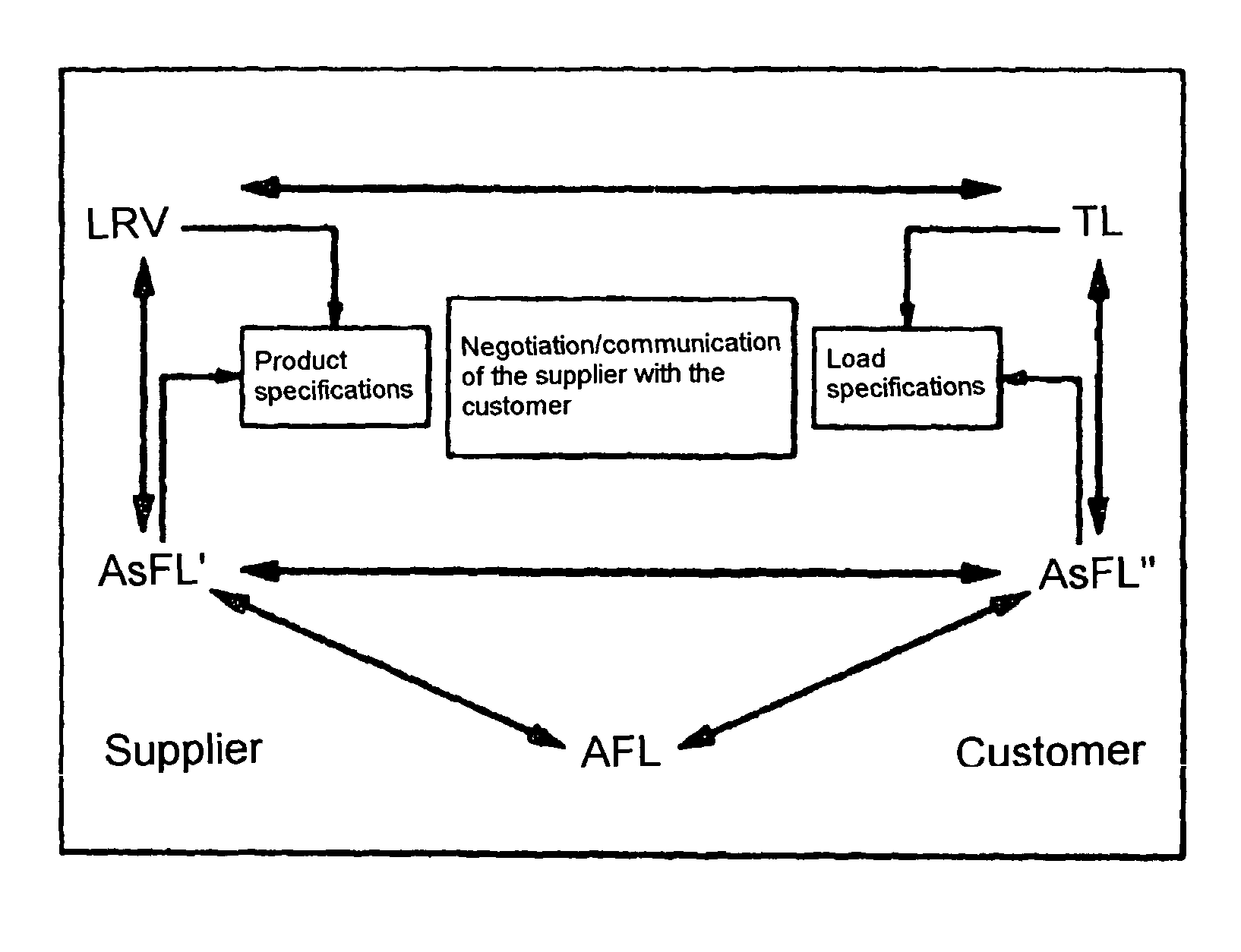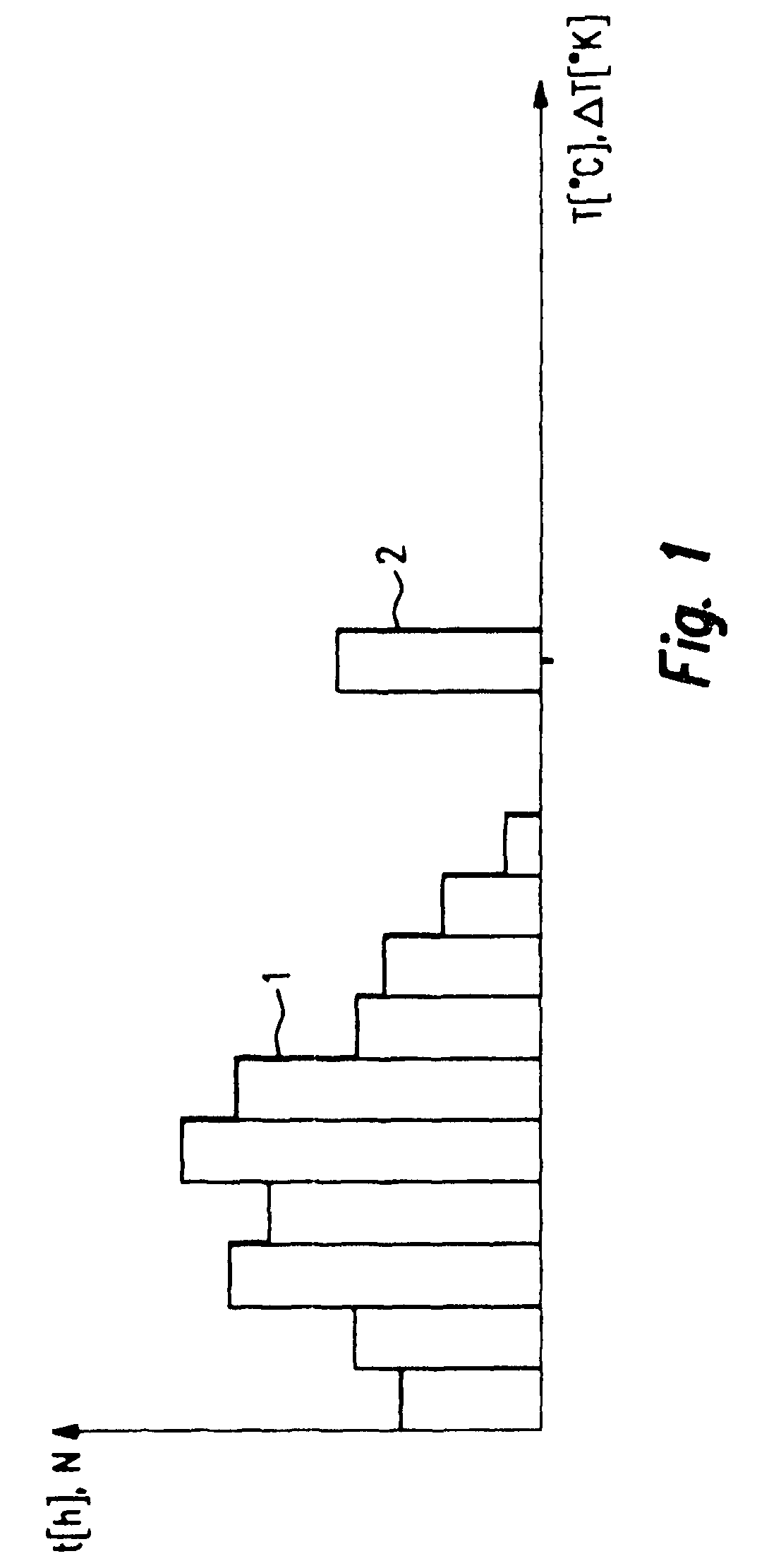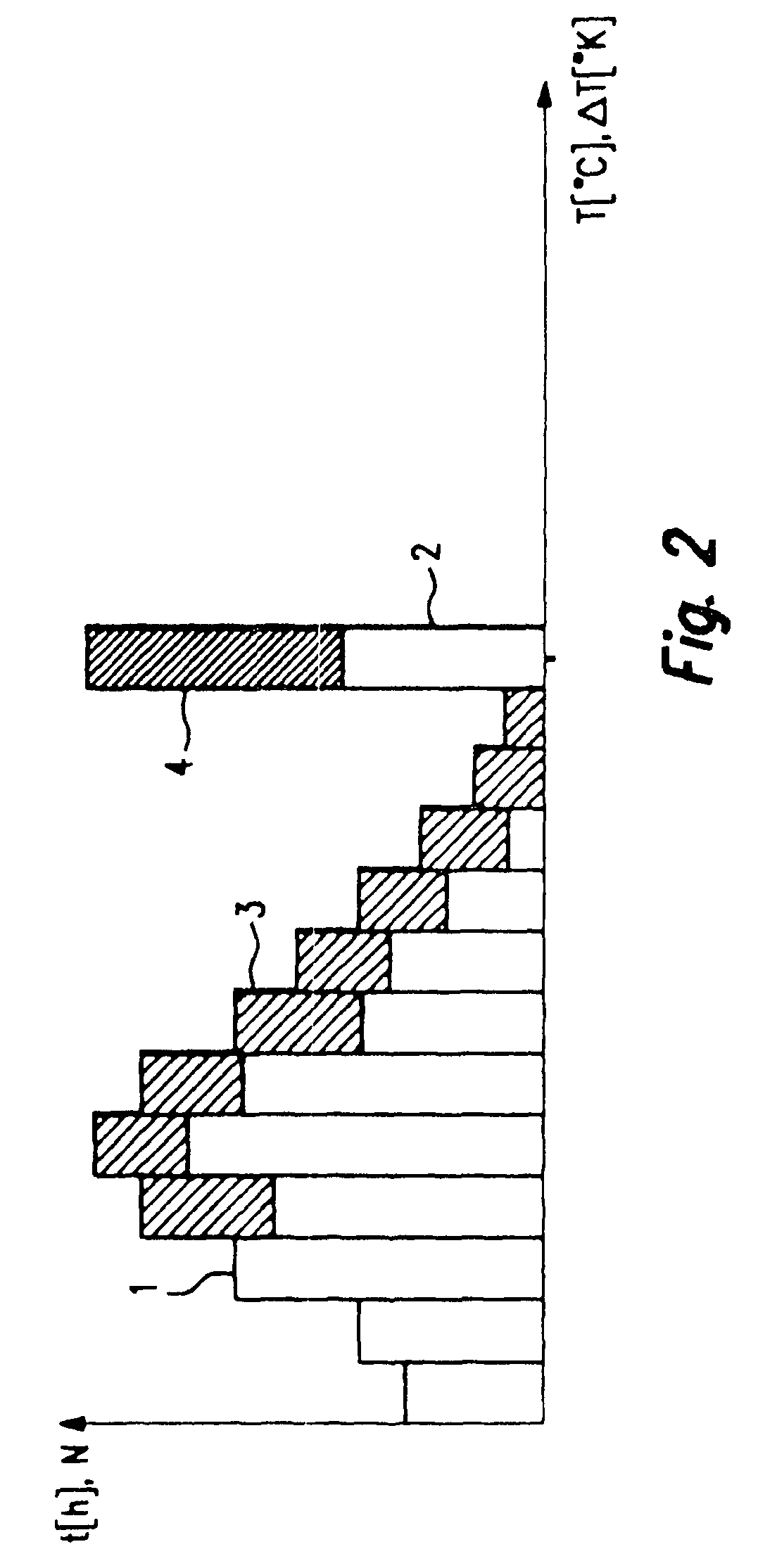Method and device for predicting a life expectancy of a product containing a plurality of components
a technology of plurality of components and life expectancy, which is applied in the direction of electrical controllers, program control, instruments, etc., can solve the problems of inability to run through the entire required minimum service life of the product, and inability to produce verification in real tim
- Summary
- Abstract
- Description
- Claims
- Application Information
AI Technical Summary
Benefits of technology
Problems solved by technology
Method used
Image
Examples
Embodiment Construction
[0056]Conventionally, the testing of products or reliability verifications for products are implemented based on standards and standardized methods provided by customers or standardization committees. Described in these standards are accelerated tests that must be conducted on a product up to a specific operating time t or a specific number of cycles N, in order to be able to verify the reliability of the product. A test is referred to as accelerated tests, if it is carried out at higher loadings than the loadings that occur in the field, but only for a reduced time t or number of cycles N. The evaluation criterion for passing the reliability test is then generally the proof that the product functions after conclusion of the test. In this manner, a Yes or No assertion may be made as to whether or not the product withstands the required loading over the required period of time. However, an assertion regarding the service life of the product under an arbitrary loading cannot be made i...
PUM
 Login to View More
Login to View More Abstract
Description
Claims
Application Information
 Login to View More
Login to View More - R&D
- Intellectual Property
- Life Sciences
- Materials
- Tech Scout
- Unparalleled Data Quality
- Higher Quality Content
- 60% Fewer Hallucinations
Browse by: Latest US Patents, China's latest patents, Technical Efficacy Thesaurus, Application Domain, Technology Topic, Popular Technical Reports.
© 2025 PatSnap. All rights reserved.Legal|Privacy policy|Modern Slavery Act Transparency Statement|Sitemap|About US| Contact US: help@patsnap.com



